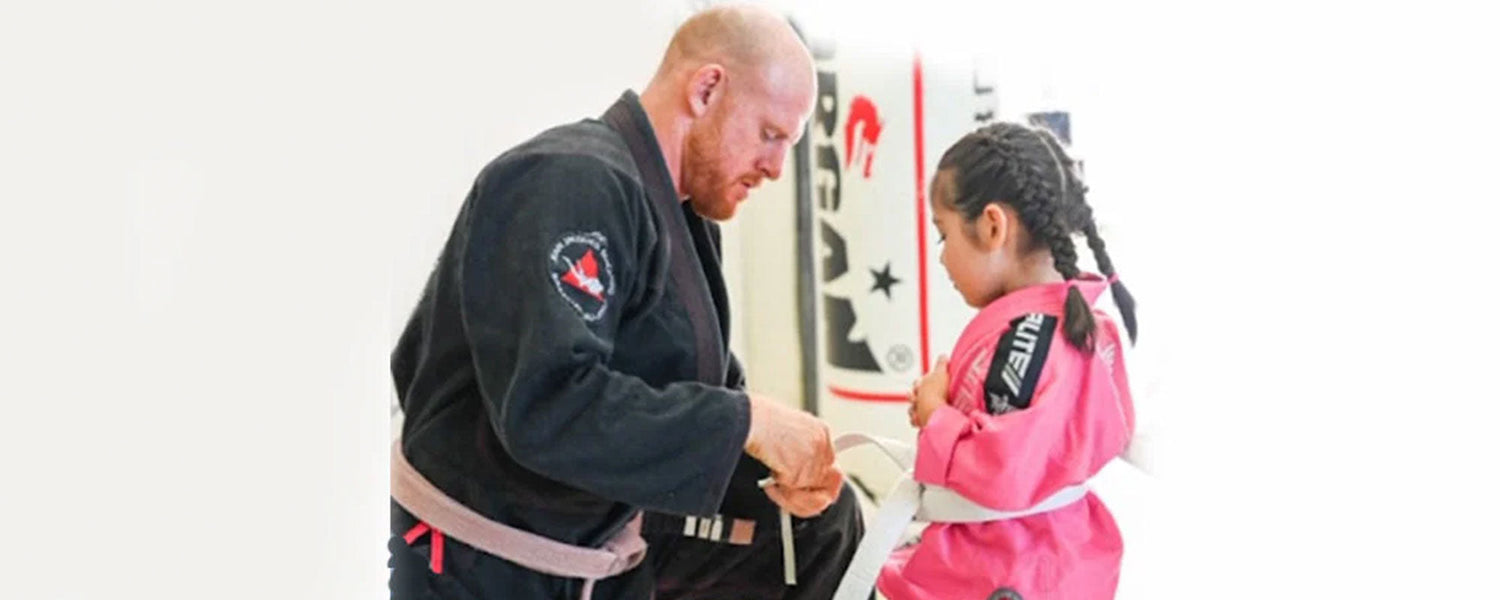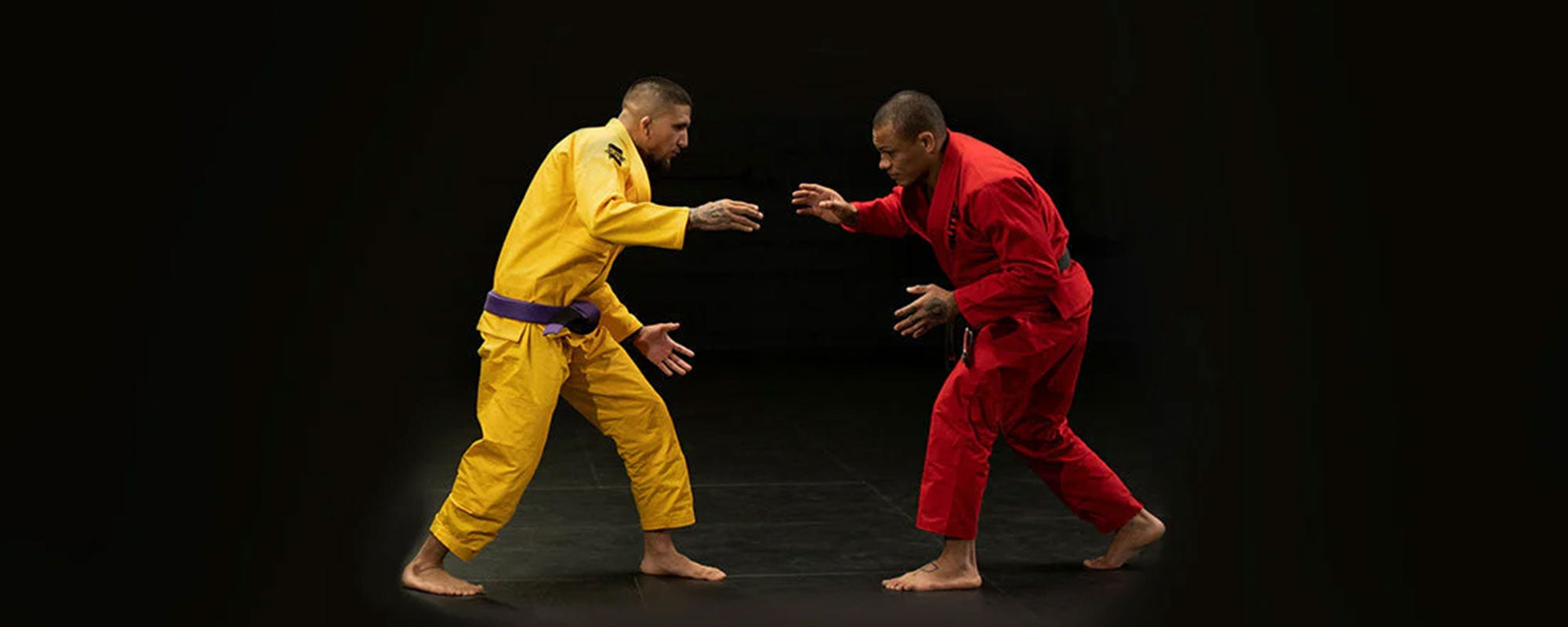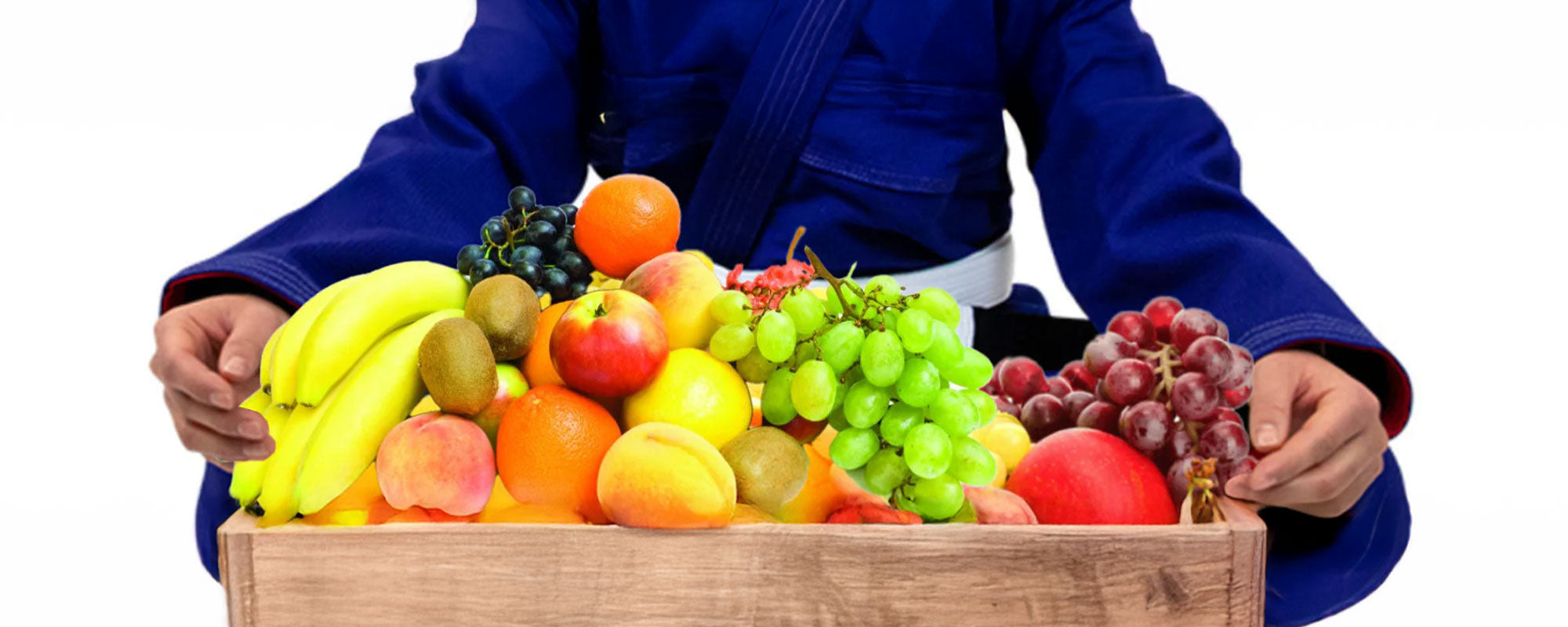Table of content
No doubt! Principles and techniques learned in jiu-jitsu lessons for kids are lifelong traits for them. Because these traits are going to help these children through life challenges and do all aspects of life in the future. Jiu-jitsu goes just beyond learning techniques by building confidence and relationships that teach how to handle life differently.
Parents prefer their kids on the mat to learn skills, organization, respect for peers, and discipline. Teaching all these aspects of BJJ also brings many challenges with them, for instructors as well as for parents when teaching kids BJJ. Some instructors divide their little students’ journey into three phases so that they can design their teaching lessons accordingly to fulfill their needs. Before digging into the common problems faced while teaching BJJ, let’s learn first about these phases of a child’s journey in BJJ.
1. Phases of Child’s Journey in BJJ
There are three essential phases of a child's journey in jiu-jitsu. Knowing about these phases is important because their information provides the instructors a base to design their lesson plans, duration of the class, and class management. As the phase is promoted
1.1. Phase 1- Little Champs
This phase includes children in the age group 4-7 years old. Their maturity level is very low. And if the training is not designed accordingly, then there are more chances of little munchkins quitting jiu-jitsu.
1.2. Phase 2- Junior Grapplers
This phase includes children in the age group 8-12 years old. Their maturity level is moderate and improved from the little champs.
1.3. Phase 3- black belt club
This phase includes children in the age group of 13-15 years old. This phase doesn’t award a black belt but this level indicates that they are on a high level of maturity and it is expected that they'll stick with it for life what their parents have chosen for them. And they will eventually earn their black belt.
2. Common Problems When Teaching Kids BJJ
Some common problems that instructors and parents will face while teaching kids BJJ are given below.
2.1. Finding the Best School and Instructor
Finding which BJJ school is best for the children is the biggest challenge for parents. Parents choose BJJ for their kids because they want them to get organized and self-disciplined. While doing so, they usually enroll them in a jiu-jitsu academy which is strict and disciplined. Getting too strict on kids, especially on little champs (4-7 years old), kind of forces them to almost quit and lose interest because of not having fun in the class. Besides, if the instructor lacks the charisma in his personality then it will also cause a lack of interest in the kids to carry on with BJJ. So finding a perfect school is a huge problem for parents.
2.2. Discipline Problem
Although BJJ teaches kids self-esteem and discipline, even before learning it, maintaining discipline in the jiu-jitsu class of kids is another big problem. Kids have mood swings and they are emotionally different from adults that is why they make honest expressions in showing whether they like their training or not. You can’t just adopt an old-style militant discipline martial art by hitting with a bamboo stick to tame your kids. Also, while training them, you can’t be so lenient with them because they will not listen to you if you get along with them too friendly. Rather you should adopt balanced behavior to keep things exciting. Plan your lesson in a fun way to engage the kid’s motivation for BJJ. To teach them discipline, you need to build trust and friendship with them so that they can listen to you. Positive reinforcement of the students by rewarding them for listening to the instructor will impact the discipline problem when teaching BJJ.
2.3. Kids’ Motivation and Engagement
Kids have shorter concentration spans and less capacity to exercise which makes it more challenging to train a kid. Guardians at times are the leaders of their children and most kids are sent forcefully by their parents, which is why they lack motivation. So, to keep up the children's inspiration, instructors need to design their BJJ courses excitedly, engaging and dynamic.
If the activities are not engaging for kids then they will lack their self-esteem. The instructor should provide a learning environment in a playful way so that their passion for BJJ develops.
As Randy Tran says,
“Passion for activities leads to greater joy and productivity among children.”
Training duration should be shorter. Try to make techniques as simple as you can. Besides, you must incorporate fun activities in the lesson plans.
Children do drills and fun games in BJJ other than self-protection methods that work on their coordination, and spatial mindfulness abilities. These abilities keep them propelled and set them up for the following grown-up framework later on.
2.4. Teaching Kids at Their Level
Most adult jiu-jitsu instructors teach children as they would adults. They simply instruct the technique to kids in a rigid, or dry manner which makes the BJJ lessons uninteresting to them. For instance, if the instructor instructs strictly to do the move, hold on, and fix this, fix that, no no no correct this, Make it perfect, then the rolling session will be boring for them. They're way lost in terms of how to deal with kids and a little champ’s kind of age category. If you can't be a kid, you can't teach a kid until you connect on that level.
2.5 Closeness to Comfort
In the age group of phase 1, instructors face the problem of that phase of making the kid comfortable with closeness. As long as the kid is not comfortable, you cannot teach them even basic techniques in BJJ. Little kids are moody and they sometimes hesitate with someone laying on them or them laying on someone else during learning basic positions like in the guard and mount. So, this situation makes it difficult for instructors to teach them BJJ. But still, instructors can make them comfortable and close by not panicking about the situation. They can teach the kids very much about how to control another five-year-old kid by mixing the BJJ techniques into some games. This will be quite helpful for getting the kids comfortable with closeness.
2.6. Hygiene Problems
BJJ is a training in which kids have to come into closer contact with each other to learn grappling. Kids are more prone to skin infections because they are not concerned with hygiene management. So, this sometimes becomes a serious problem because they can proliferate contagious diseases among peers. To avoid this, instructors should, along with parents, counsel them about hygiene issues by instilling hygiene management in them.
2.7. Lack of Balance Between a Playful Circus and a Structured Learning Environment
Another problem while teaching kids BJJ is a lack of balance between a playful circus and a structured learning environment. Sometimes, to keep up the interest and motivation of kids, instructors lose control while providing a very playful environment where your jiu-jitsu is the most fun for the child's whole week. Kids definitely love this playful environment but it will lack the structure in which the child is learning how to sit in the line when it's time to line up. So it is necessary for the instructors to be able to create and manage that very fine balance between a playful circus and a structured learning environment.
2.8. Kids Apply BJJ to Bully and Tease Others
It is a fact that parents send their kids to jiu-jitsu to learn self-defense and enhance their confidence in order to deal with bullying situations. But what if your kid uses BJJ to bully other kids or fights after school to try BJJ techniques to see if they work or not? This is the major problem that sometimes parents face in counseling the juvenile minds while teaching them BJJ. It might seem like a parenting issue but it is part of BJJ and what it can entail while teaching them BJJ. To avoid this situation, parents and instructors must clearly counsel the kid to stop using the skills to bully other people because this practice hurts people both physically and emotionally and if they cannot be trusted with the knowledge that BJJ entails then they will face consequences. Instructors must force the kids to understand that if they do not respect their peers and follow the rules properly then they will not be permitted to continue BJJ.
2.9. Parents insist to move kids on to the next level
Another problem while teaching BJJ to kids is that parents sometimes want their kids to be promoted sooner. That is why parents insist the instructors teach their children more advanced techniques but the instructor knows that there is still time in it and there's no hurry. Parents should leave it to the instructor because the instructor knows when the child is ready to move to the next level of focus or if they should stay where. When there is a right time they will automatically be moved to the next level.
2.10. The problem in memorizing BJJ techniques
No doubt, kids’ cognitive level of learning is splendid but still, sometimes they find it difficult to memorize BJJ techniques if not tested often. So, to deal with this problem instructors should prepare their lesson plans easier and take tests often on special testing days so that they can memorize them easily.













Leave a comment
This site is protected by hCaptcha and the hCaptcha Privacy Policy and Terms of Service apply.